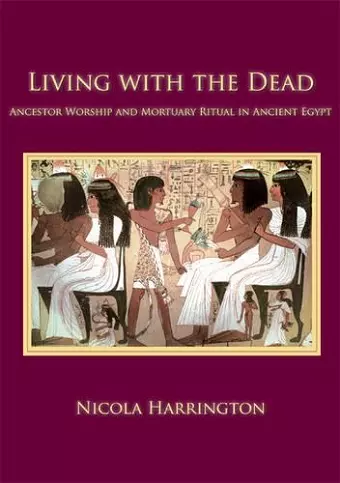Living with the Dead
Ancestor Worship and Mortuary Ritual in Ancient Egypt
Format:Paperback
Publisher:Oxbow Books
Published:31st Dec '12
Currently unavailable, and unfortunately no date known when it will be back

Living with the Dead presents a detailed analysis of ancestor worship in Egypt, using a diverse range of material, both archaeological and anthropological, to examine the relationship between the living and the dead. Iconography and terminology associated with the deceased reveal indistinct differences between the blessedness and malevolence and that the potent spirit of the dead required constant propitiation in the form of worship and offerings. A range of evidence is presented for mortuary cults that were in operation throughout Egyptian history and for the various places, such as the house, shrines, chapels and tomb doorways, where the living could interact with the dead. The private statue cult, where images of individuals were venerated as intermediaries between people and the Gods is also discussed. Collective gatherings and ritual feasting accompanied the burial rites with separate, mortuary banquets serving to maintain ongoing ritual practices focusing on the deceased. Something of a contradiction in attitudes is expressed in the evidence for tomb robbery, the reuse of tombs and funerary equipment and the ways in which communities dealt with the death and burial of children and others on the fringe of society.
"Harrington... investigates the mortuary cult and veneration of ancestors, with the associated rituals, statues, ancestor busts and stelae, before discussing when and where such interactions with the dead took place, and attitudes to the dead (including the impacts of tomb robbery, desecration, tomb reuse and the death and burial of children), backed up with many black-and-white and colour illustrations and a comprehensive bibliography." -- Ancient Egypt Magazine Ancient Egypt Magazine 4.0 out of 5 stars An absorbing exploration of the relationships between ancient Egyptians and their dead, 30 Sep 2014 This review is from: Living with the Dead (Studies in Funerary Archaeolog) (Paperback) Nicola Harrington here gives an overview of the evidence for the religious practices and beliefs regarding death and the dead, focusing on the period from the Old to the New Kingdoms, using textual, iconographical and archaeological sources to analyse the interaction between the living and the dead. Beginning with the essential characteristics of the dead as distinct from the living, Harrington then investigates the mortuary cult and veneration of ancestors, with the associated rituals, statues, ancestor busts and stelae, before discussing when and where such interactions with the dead took place, and attitudes to the dead (including the impacts of tomb robbery, desecration, tomb reuse and the death and burial of children), backed up with many black-and-white and colour illustrations and a comprehensive bibliography. She concludes that the relationship between the living and the dead in New Kingdom Egypt was a complex one based on reciprocity, but where fear and a need to appease the malevolent dead may also have played an important role. The act of preparing for burial and arranging a mortuary cult may have been sufficient to secure a place in the afterlife. -- Ancient Egypt Magazine Ancient Egypt Magazine A highlight of this nifty little book is its guide to identifying the deceased in a scene on an Ancient Egyptian tomb wall (pointers include their being shown as larger than other people, and the epithet maa-kheru, 'true of voice'.). Harrington's neat dissection of Egyptian words for aspects of the soul, and funerary magic, is also handy. Attitudes towards the dead were not always so reverent, however, as a chapter on ancient tomb desecration reveals. Likewise, the dead themselves were not always benign - those who died violently or abroad, and thus lacked proper funerary rites, became mwt: malevolent dead, blamed for miscarriages, disease, and crop failure. Crammed with interesting details, this is a great read. -- World Archaeology World Archaeology
ISBN: 9781842174937
Dimensions: unknown
Weight: unknown
208 pages